Every home chef knows that having the right tools in the kitchen can make all the difference. From sauté pans to stockpots, the type of cookware you use can affect the taste, texture, and overall quality of your dishes. But with so many options available, it can be challenging to know which type of cookware is best for your needs.
In this comprehensive guide, we’ll explore the various types of cookware available, including their materials, benefits, and how to care for them. Whether you’re an experienced chef or just starting, this guide will equip you with the knowledge you need to make informed decisions for your kitchen.
When it comes to cookware, there are various materials to choose from, each with its unique benefits. Understanding the different types of cookware materials available will help you choose the most suitable pots and pans for your cooking style.
Here are some of the most common cookware materials:
| Cookware Material | Features |
|---|---|
| Stainless Steel | Durable, versatile, and non-reactive |
| Non-Stick | Easy to clean, prevents food from sticking to its surface |
| Cast Iron | Exceptional heat retention, even heat distribution, and versatile |
| Copper | Superior heat conductivity, precise temperature control, and beautiful design |
| Aluminum | Lightweight, affordable, and conducts heat efficiently |
| Ceramic | Non-reactive, non-toxic, and versatile |
| Enamel | Durable, non-reactive, and easy to clean |
Choosing the right cookware material can make all the difference in the quality of your meals. In the next sections, we will take a closer look at each type of cookware material and its benefits.
Stainless steel is a popular choice for cookware due to its durability, versatility, and non-reactive surface. It can be used for boiling, frying, sautéing, and more. Stainless steel cookware is also dishwasher safe, making it easy to clean. However, it can be prone to sticking, which can be remedied by using oil, butter, or non-stick cooking spray.
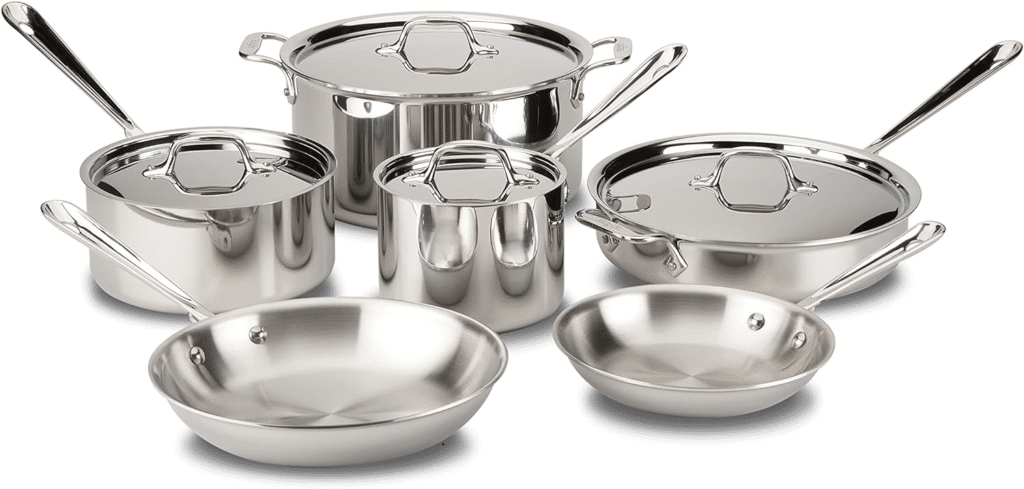
Non-stick cookware is designed to prevent food from sticking to its surface, making it ideal for cooking delicate foods such as eggs, fish, and pancakes. It’s also easy to clean, as food slides off the surface effortlessly. However, non-stick cookware can scratch easily and may need to be replaced more frequently than other types of cookware.
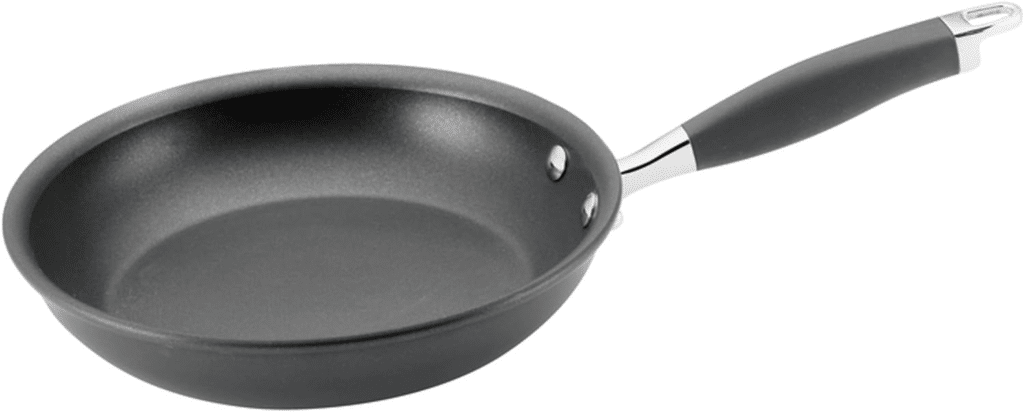
Cast iron cookware has been used for centuries and is known for its exceptional heat retention and even heat distribution. It’s great for cooking stews, roasts, and other hearty dishes. Cast iron cookware also requires minimal oil and is easy to clean. However, it can be heavy and may require seasoning to prevent rusting.
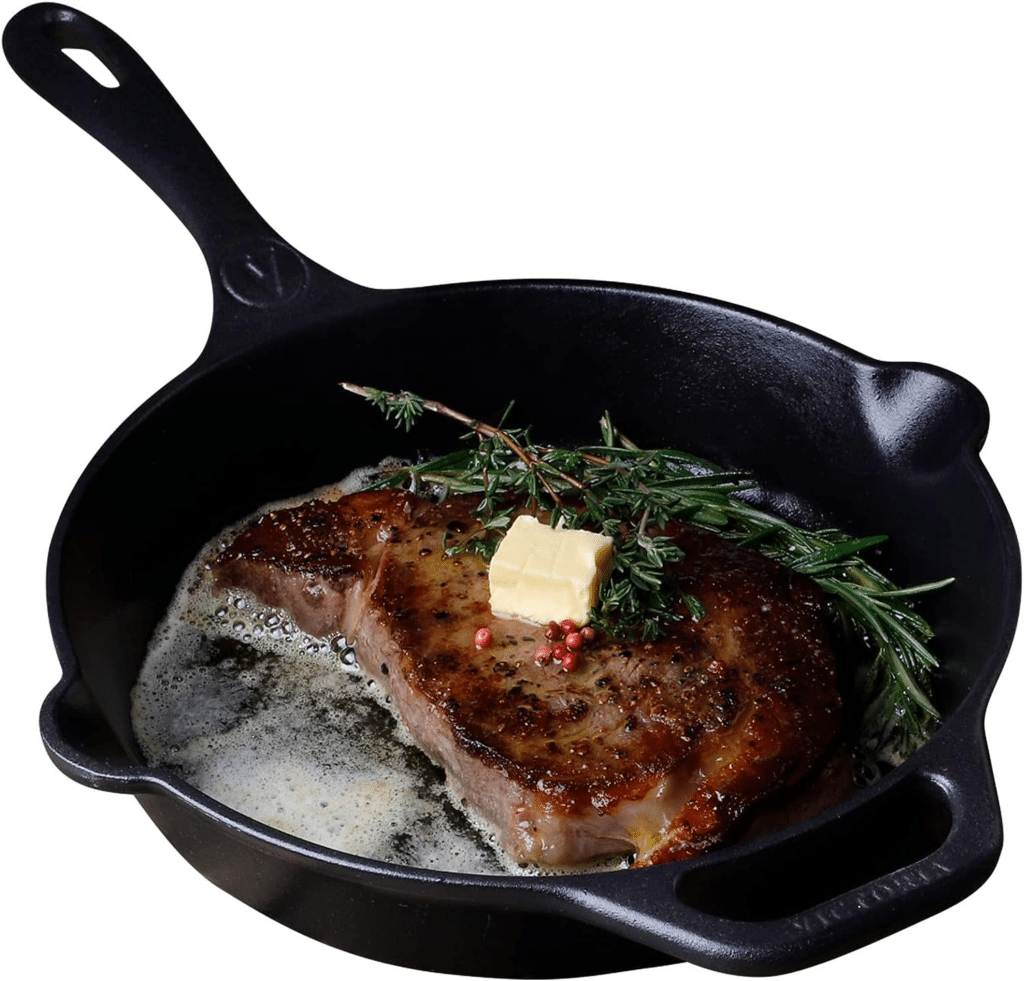
Copper cookware is prized for its superior heat conductivity, allowing for precise temperature control. Copper is also visually appealing, making it perfect for serving dishes straight from the stove. However, copper cookware can be expensive and requires proper cleaning and maintenance to prevent tarnishing.
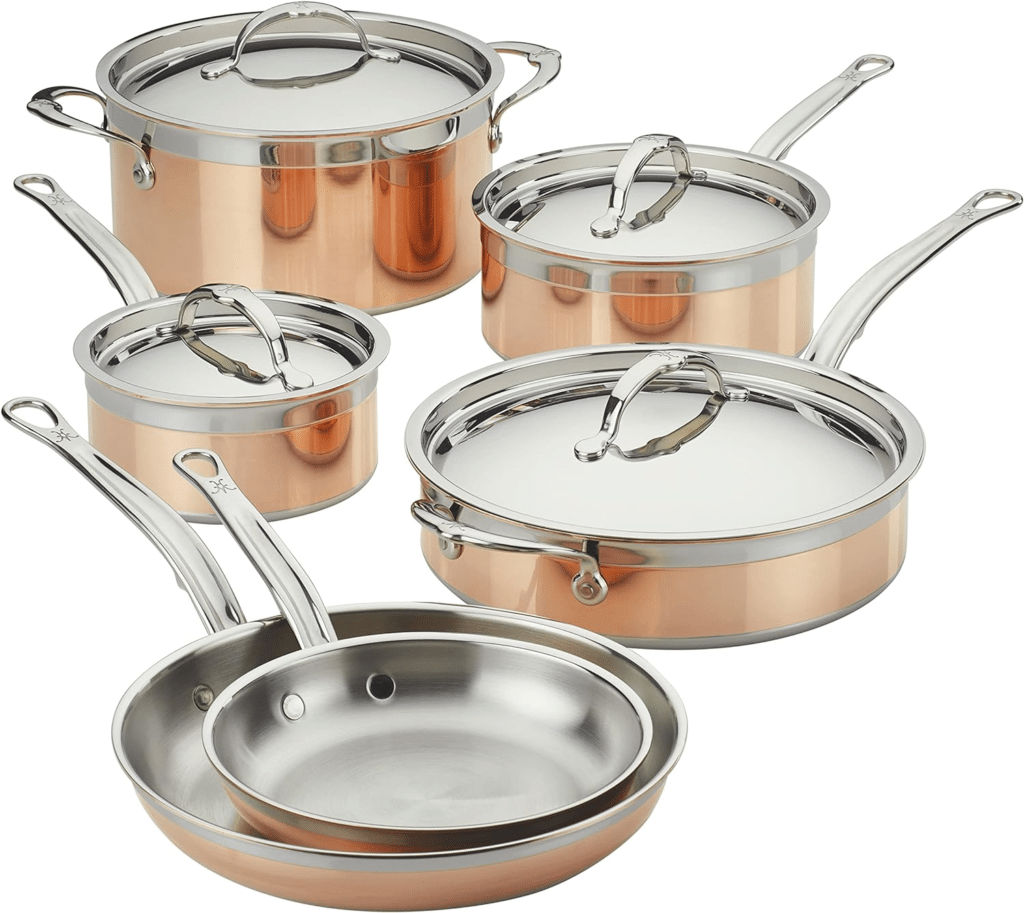
Aluminum cookware is lightweight, affordable, and conducts heat efficiently. It’s great for boiling, sautéing, and frying. However, it can react with acidic foods, leading to off-flavors. To avoid this, it’s recommended to use uncoated or hard-anodized aluminum cookware.
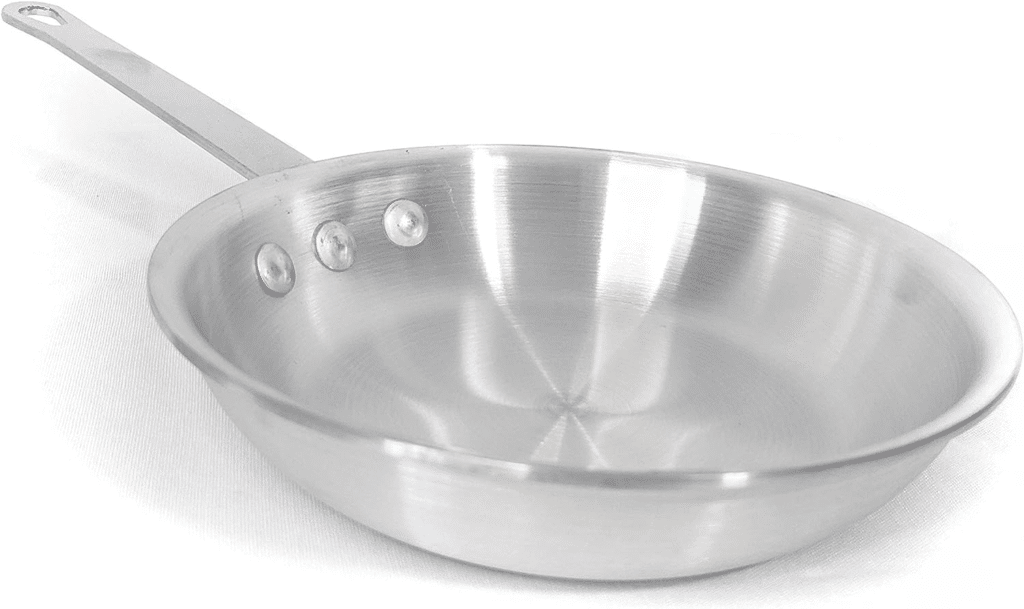
Ceramic cookware offers a non-reactive and non-toxic cooking surface, making it a popular choice for health-conscious individuals. It’s great for baking, roasting, and braising. Ceramic cookware is also dishwasher safe and easy to clean. However, it can be prone to chipping and cracking if not handled with care.
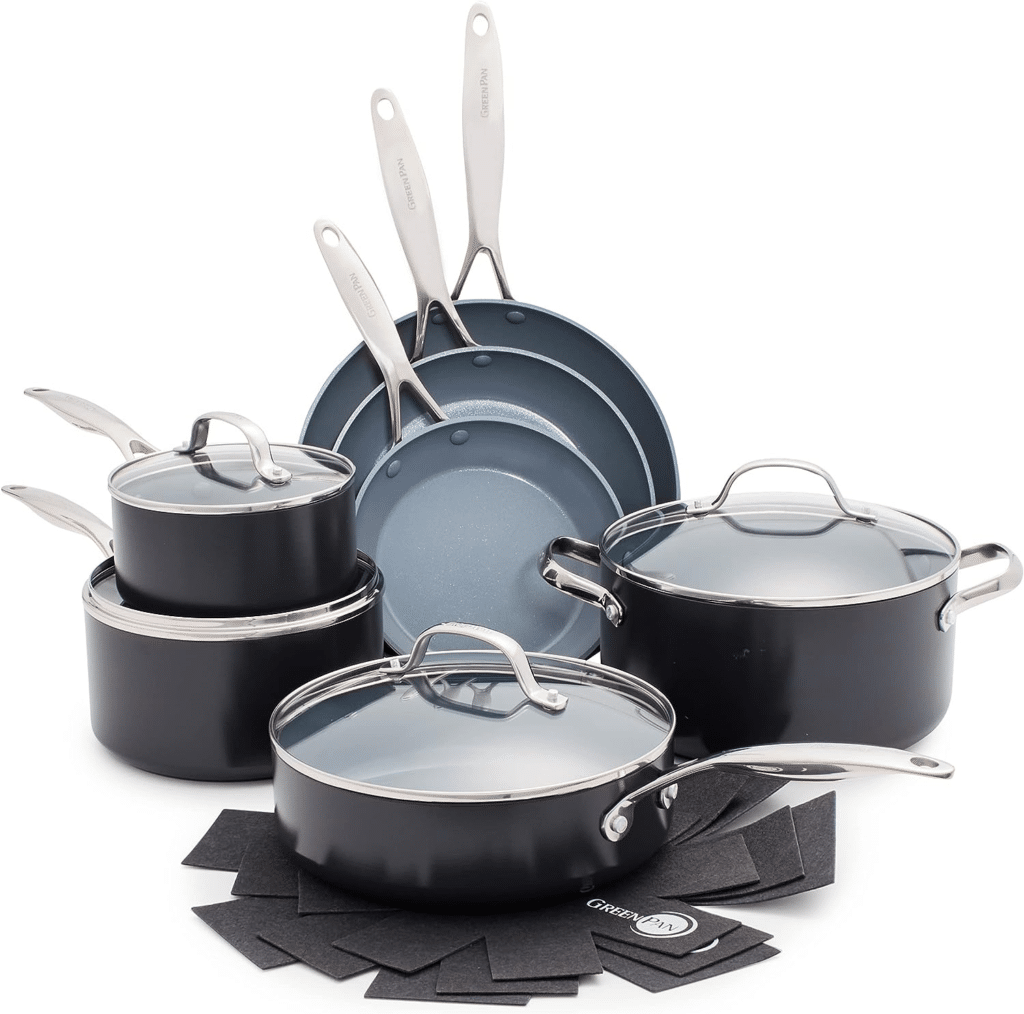
Enamel-coated cookware combines the durability of metal with a non-reactive and easy-to-clean surface. It’s great for stewing, braising, and baking. Enamel cookware can also come in a wide range of colors, making it a stylish addition to any kitchen. However, enamel can chip or scratch if not handled with care.

Stainless steel cookware is a popular choice for both home cooks and professionals due to its durability and versatility.
One of the biggest benefits of using this type of cookware is its excellent heat retention and distribution. Stainless steel is a poor conductor of heat, but many stainless steel cookware sets come with a layer of aluminum or copper at the bottom of the pan to improve heat distribution. This layer distributes the heat evenly throughout the pan, allowing for more consistent cooking results.
Another advantage of stainless steel is its resistance to rust and corrosion, even with frequent use. This makes it a long-lasting investment for your kitchen.
In addition to its durability and performance, stainless steel cookware is also easy to clean and maintain. The non-porous surface prevents food from sticking, making it an excellent option for low-fat cooking.
To keep your stainless steel cookware looking like new, avoid using abrasive cleaners and scrubbers that can scratch the surface. Instead, use a non-abrasive cleaner and a soft sponge or cloth to scrub away any food residue.
Here are some additional tips for maintaining your stainless steel cookware:
By following these simple steps, you can keep your stainless steel cookware in excellent condition for years to come.
Non-stick cookware is an essential item in any kitchen, especially for those who love to prepare delicate dishes that can easily stick to pans and pots. This type of cookware is designed to prevent food from sticking to its surface, making cooking and cleaning much easier.
There are various advantages of using non-stick cookware, such as:
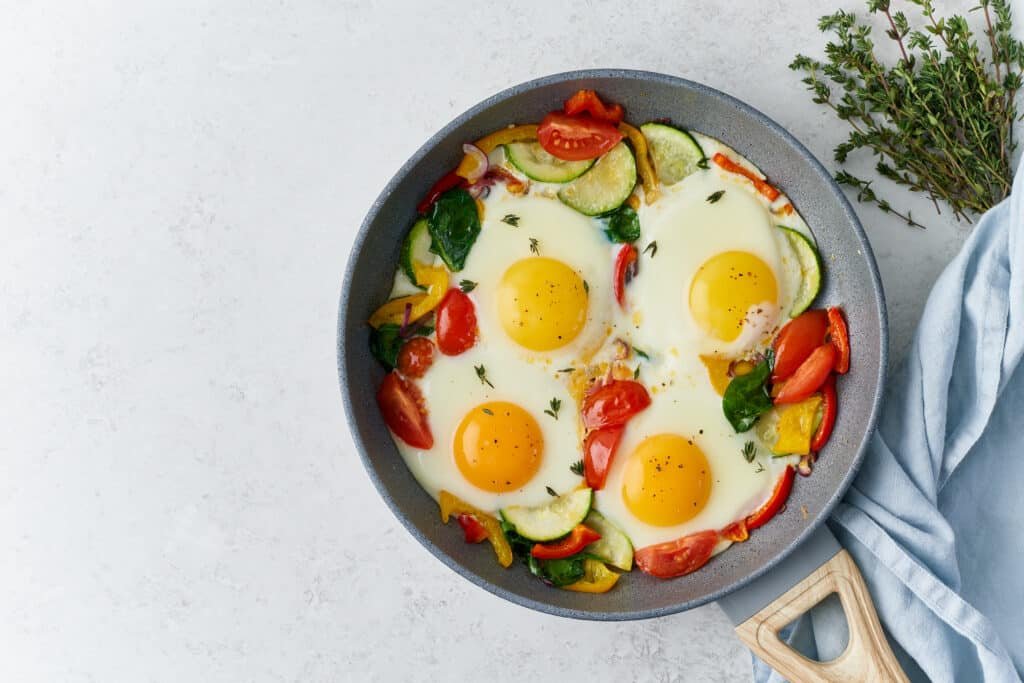
When selecting non-stick cookware, keep the following tips in mind:
Overall, non-stick cookware is a convenient and versatile option for any home chef. With the right selection and proper care, it can help you create delicious meals with ease.
Cast iron cookware has been used for centuries and is still a popular choice for home cooks and professional chefs alike. Its high heat retention and even heat distribution make it an excellent choice for cooking a variety of dishes. Here are some benefits of using cast iron cookware:
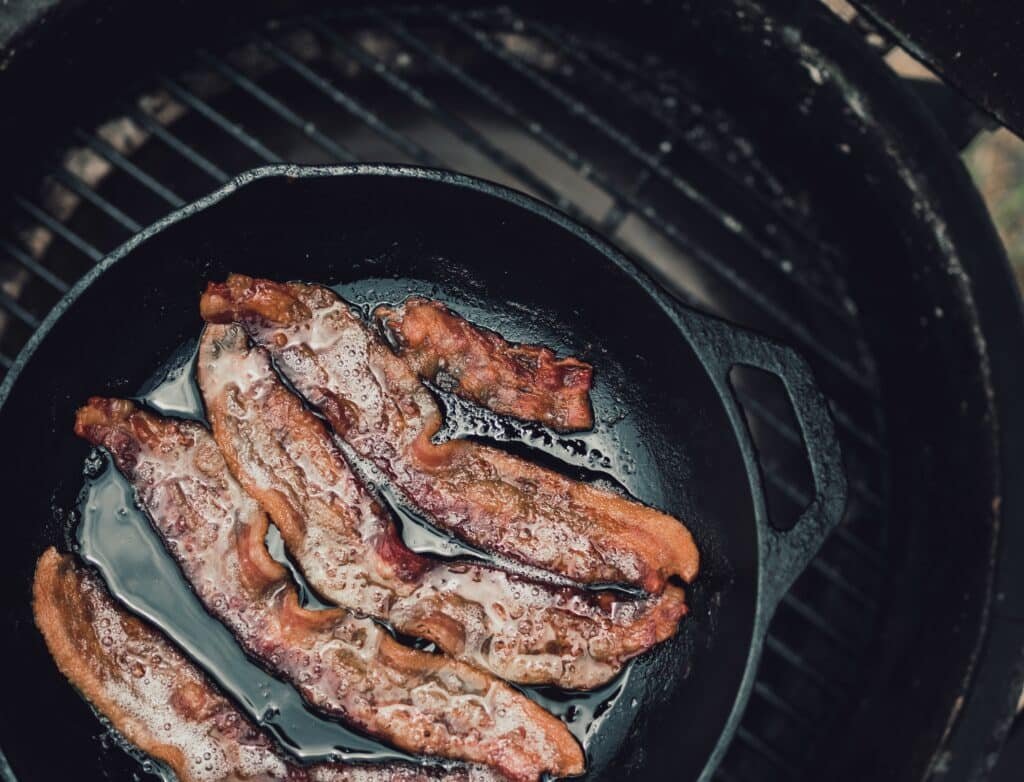
When choosing cast iron cookware, it’s essential to know how to properly care for and maintain it. Here are some tips:
Overall, cast iron cookware is a versatile and durable choice for any home chef. By following these tips, you can enjoy the benefits of cast iron for many meals to come.
Copper cookware is a highly-prized choice for chefs and home cooks alike due to its superior heat conductivity, allowing for precise temperature control. Let’s explore the advantages of using copper cookware and learn how to clean and maintain these unique pots and pans.
Copper is an excellent conductor of heat, allowing for even distribution and precise temperature control. Copper pots and pans are perfect for cooking delicate dishes that require precise timing and temperature control such as sauces and soups. They are also ideal for searing meats due to the high heat they can generate.
Another advantage of copper cookware is its aesthetic appeal. Copper pots and pans are often used as decorative items in kitchens, adding a touch of elegance and sophistication.
While copper cookware can be relatively expensive compared to other types, it is durable and can last for generations with proper care and maintenance.
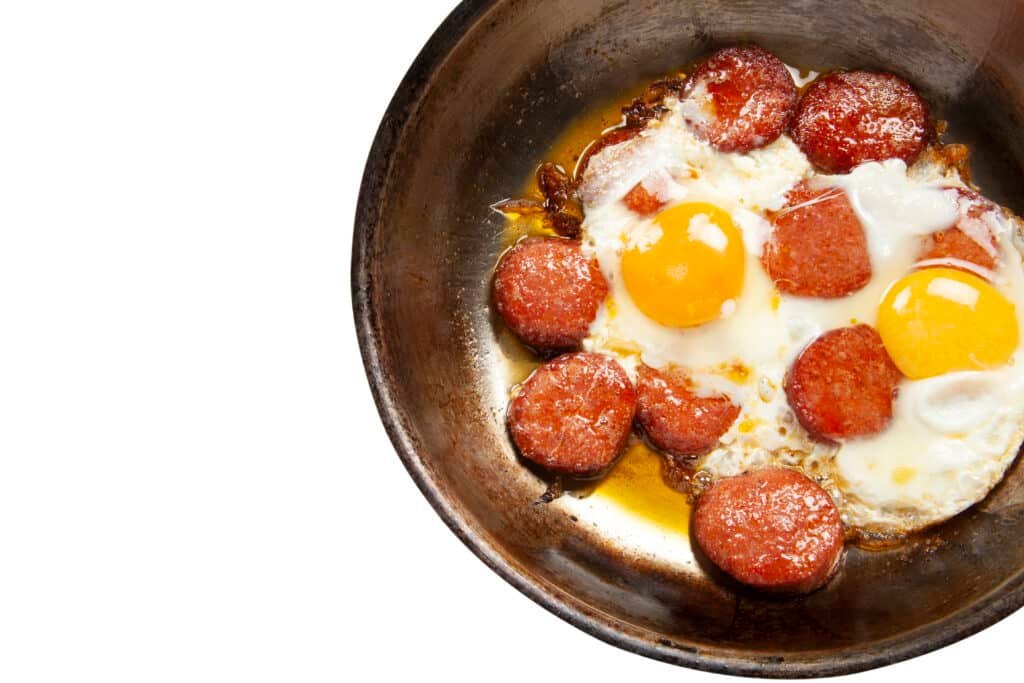
To maintain the lustrous appearance of copper cookware, it’s important to clean it regularly. To remove stains and discoloration, use a mixture of equal parts vinegar and salt. Gently scrub the surface with a soft sponge or cloth, rinse with water, and dry thoroughly with a towel.
Copper cookware should also be polished periodically to restore its shine. To do this, use a copper polish and follow the manufacturer’s instructions carefully.
To prevent damage to the interior of copper cookware, avoid using metal utensils when cooking or stirring. Instead, opt for wooden or silicone utensils.
Aluminum cookware is a popular choice for home chefs due to its affordable price and excellent heat conductivity. But its benefits extend beyond its affordability and excellent heating properties. Let’s explore some of the other advantages of using aluminum cookware in your kitchen:
While aluminum cookware is generally safe to use, some people are concerned about the potential health effects of cooking with aluminum. However, it’s important to note that the amount of aluminum that leaches into food when cooking with aluminum cookware is minimal. The World Health Organization has deemed that the level of aluminum exposure from cookware is not a health risk for humans.
Overall, aluminum cookware is an excellent choice for home chefs who want affordable, versatile, and easy-to-clean cookware that offers excellent heat conductivity. With proper care and maintenance, your aluminum pots and pans can last for years, making them a smart investment for any kitchen.
Ceramic cookware has become increasingly popular due to its non-reactive and non-toxic features. Unlike other materials, ceramic cookware does not leach chemicals or metals into food, making it an excellent choice for health-conscious individuals. Here are some of the top advantages of using ceramic cookware in your kitchen:
To make the most of your ceramic cookware, it’s essential to use the right cooking techniques and care for it properly. Here are some tips to help you get the most out of your ceramic pots and pans:
Enamel cookware is a popular choice for home chefs due to its durability, versatility, and attractive appearance. This cookware is made of a metal base, such as cast iron or steel, coated with a layer of enamel, which is a type of glass. The enamel provides a non-reactive and easy-to-clean surface, making it practical for a variety of cooking styles and ingredients.
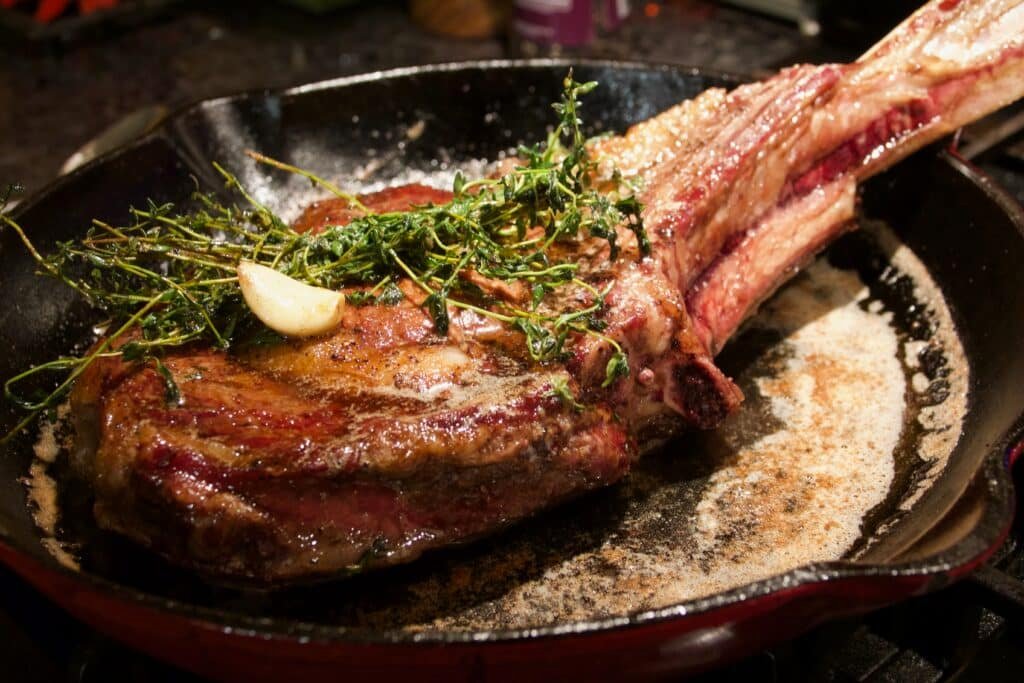
Enamel cookware offers several advantages that make it a worthwhile investment for any kitchen:
Enamel cookware is also oven safe and can be used on most stovetops, including gas, electric, and induction.
Proper care and maintenance of enamel cookware is important to ensure its longevity and performance. Here are some tips:
| Do: | Don’t: |
|---|---|
|
|
With proper care, enamel cookware can last for many years and provide a wonderful cooking experience.
If you have an induction cooktop in your kitchen, it’s essential to choose the right cookware that is compatible with its magnetic field. Induction-compatible cookware is designed to work efficiently and safely with this type of cooktop. Here are some characteristics of induction cookware to keep in mind:
Choosing the right induction-compatible cookware can be a challenge, but it’s worth the effort to ensure safe and efficient cooking. Look for cookware sets that are labeled as induction-compatible or have a symbol indicating compatibility. You can also purchase individual pieces of cookware that are labeled as such.
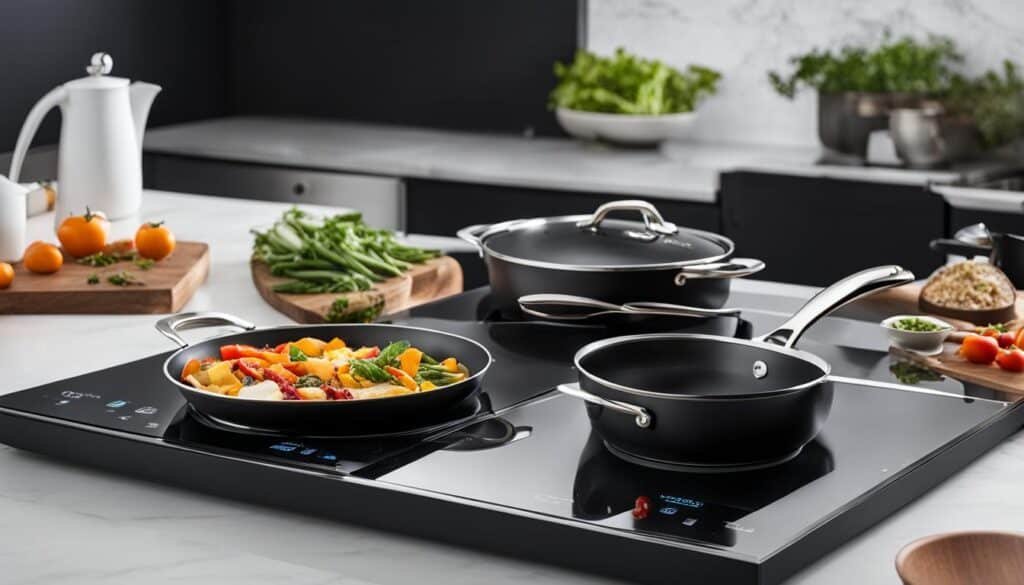
“Induction cookware must be made of magnetic material, such as cast iron or magnetic stainless steel.”
Investing in a cookware set is an important decision that can impact your cooking experience for years to come. Here are some factors to consider when selecting the perfect set for your needs:
Here are some popular types of cookware sets to consider:
| Type of Cookware Set | Number of Pieces | Material | Price Range |
|---|---|---|---|
| Stainless Steel Cookware Set | 10-14 pieces | Stainless Steel with Aluminum or Copper Core | $100-$500 |
| Non-Stick Cookware Set | 8-12 pieces | Aluminum with Non-Stick Coating | $50-$300 |
| Cast Iron Cookware Set | 3-6 pieces | Cast Iron | $100-$300 |
| Ceramic Cookware Set | 10-12 pieces | Ceramic with Non-Stick Coating | $100-$300 |
Remember, the most important thing is to select a cookware set that meets your individual needs and preferences. Consider the factors above and take your time when making your decision. A high-quality cookware set can be a valuable investment that will serve you well for years to come.
Investing in high-quality cookware is essential to elevate your culinary skills. However, proper care and maintenance are equally important to ensure your pots and pans perform optimally. Here are some tips for maintaining your cookware:
Always clean your cookware after each use to prevent buildup of grease and food residue. Use a non-abrasive sponge or cloth to avoid scratches or damage to the surface. Avoid using abrasive cleaners or steel wool as they can scratch and damage the cookware. Instead, use a soft cloth and mild detergent to clean the cookware.
For tough stains or burnt-on food, fill the cookware with warm water and a small amount of baking soda. Allow it to sit for a few minutes, then scrub gently with a soft-bristled brush. Rinse thoroughly with warm water and dry with a soft cloth.
Store your cookware in a dry, cool place to prevent rust and damage. If you stack your pans, place a soft cloth or paper towel between them to prevent scratches. Do not store food in metal cookware as it can cause discoloration and alter the taste of the food.
Periodically check your cookware for any signs of damage or wear. If the surface is scratched or chipped, it may be time to replace the cookware. For non-stick cookware, avoid using metal utensils as they can scratch the surface. Instead, use wooden or silicone utensils to prolong the lifespan of the coating.
When storing your cookware, remember to avoid stacking heavy items on top of it as it can cause warping or damage. Regularly maintain and polish copper and stainless steel cookware to keep it looking shiny and new.
By following these simple care and maintenance tips, you can ensure your cookware lasts for years to come and continues to enhance your culinary creations.